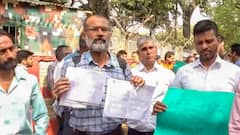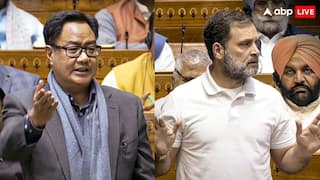As Ram Lalla Arrives In Ayodhya, Kejriwal, AAP Leaders Attend Bhandaras In Delhi
CM Arvind Kejriwal highlighted the historic significance of the 'Pran Pratistha' ceremony of Lord Ram in the newly constructed temple in Ayodhya.

New Delhi: On a day when the world was soaking in the momentous Ram temple conscretion ceremony, Delhi Chief Minister Arvind Kejriwal actively participated in ‘bhandaras’ (community kitchen) organised across the national capital.
Taking to social media, Delhi CM Arving Kejriwal on X, shared pictures of himself worshipping at a temple and later engaging in the community-wide food distribution program, known as ‘bhandaras,’ conducted on special occasions. He offered his best wishes on this sacred occasion in another X post.
आज प्राण प्रतिष्ठा के अवसर पर दिल्ली के अलग-अलग इलाक़ों में आयोजित भंडारों में शामिल हुआ। pic.twitter.com/vAM69RNNGl
— Arvind Kejriwal (@ArvindKejriwal) January 22, 2024
According to news agency ANI, Kejriwal highlighted the historic significance of the Pran Pratistha ceremony of Lord Ram in the newly constructed Shri Ram Janmbhoomi Mandir in Ayodhya.
Earlier, a day before conscretion ceremony of Ram Mandir, Delhi CM had attended Ramlila event. While addressing the gathering, Kejriwal said the AAP dispensation in Delhi is inspired by the concept of 'Ram Rajya' and draws motivation from it in providing various facilities to the people of the national capital, news agency PTI reported.
The ceremony, led by Prime Minister Narendra Modi, took place at 12:29 pm, following a seven-day ritual that began on January 16, 2024.
The Pran Pratistha ceremony saw the participation of representatives from major spiritual and religious sects, along with individuals from diverse backgrounds, including various tribal communities. Prime Minister Narendra Modi addressed the gathering, expressing joy that Ram Lalla would no longer reside in a tent but in the grand temple.
Following the Pran Pratistha rituals, the idol of Ram Lalla was unveiled at the Shri Ram Janmbhoomi Mandir. The temple, constructed in traditional Nagara style, has dimensions of 380 feet in length (east-west), 250 feet in width, and 161 feet in height, supported by 392 pillars and 44 doors. The intricately sculpted pillars and walls showcase depictions of Hindu deities, gods, and goddesses, with the main sanctum sanctorum housing the idol of Shri Ram Lalla.






































